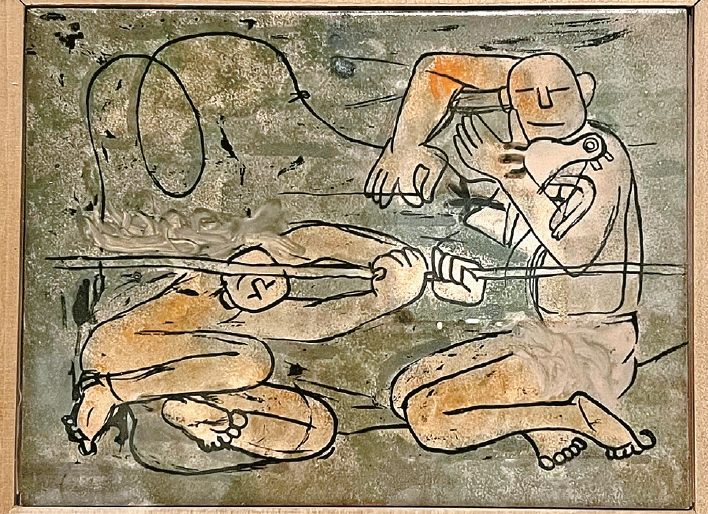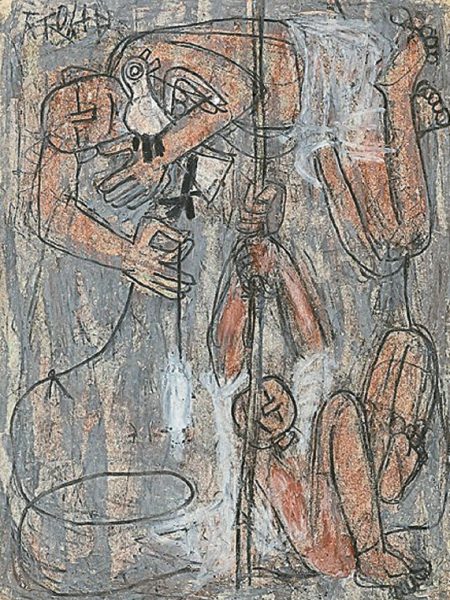The renowned Los Angeles County Museum of Art (LACMA) has sparked controversy for displaying forged Korean artworks in its “Korean Treasures” exhibition, which was held from February 25 to June 30.
In 2021, the museum received a donation of 100 Korean paintings, ceramics, and celadon from Dr. Chester Chang, a Korean-American philanthropist and art collector, and his son Cameron Chang. From this collection, 35 items were selected for a special exhibition.
However, as soon as the exhibition opened on February 25, accusations of forgery emerged. Experts from Korea suggested that four pieces, purportedly by artists Park Soo-keun and Lee Jung-seob, were likely forgeries. In response, the museum held a special lecture on March 4, where the curator responsible for the exhibition insisted that the pieces had been verified as genuine through extensive scientific testing and research.
Despite this, the Park Soo-keun Institute, the Galleries Association of Korea, and the Korean Cultural Center LA sent inquiries to the museum regarding the authenticity of the works. On April 22, the Galleries Association of Korea formally raised the need for further research on some of the donated paintings.

As the forgery controversy persisted, with Korean art experts providing objective evidence, LACMA conceded that additional research was necessary and organized a forum with Korean experts to reassess the pieces. This forum, held on June 26 at the Korean Treasures exhibition hall, included key figures such as Stephen Little, the curator of the exhibition, and four experts from Korea — Dong-guk Lee, Director of the Gyeonggi Provincial Museum; Hyun-sun Tae, Senior Researcher at the Leeum Museum of Art’s Collections Research Department; Sun-pyo Hong, Professor Emeritus at Ewha Womans University; and Sun-hee Kim, former Director of the Busan Museum of Art.
During the forum, it was revealed that “Children Playing on a Pole,” an image included in the Lee Jung-seob catalog raisonné, was presented as the “original.” However, the piece titled “Crawling Children” displayed at LACMA was transformed from a vertical painting into an unsigned horizontal painting. It was clearly a counterfeit.
Stephen Little’s claim that a 1963 sticker from an art materials store in New York or LA on the back of a canvas attributed to Park Soo-keun indicated authenticity was countered by Professor Hong, who argued that the material’s age was secondary to the artist’s unique style and technique, which the exhibited painting did not match.
This was the first time the museum had invited foreign experts for a special appraisal following an exhibition opening. Ultimately, it acknowledged the possibility of forgeries among the displayed works and announced the cancellation of the exhibition catalog’s publication.
On the exhibition’s final day, June 30, the museum quietly removed four controversial paintings attributed to Lee Jung-seob and Park Soo-keun without issuing any statement or explanation, and it has maintained silence since.
This controversy has significantly damaged LACMA’s reputation. Initially, if the museum had accepted the concerns and conducted a re-evaluation, the situation might have been resolved without much trouble.

However, the museum disregarded the expertise of Korean art professionals, overlooking the fact that they are the most knowledgeable about Korean artworks. By prioritizing its prestige as a world-class museum, LACMA ended up compromising its reputation.
The incident exposed a lack of awareness and understanding of the Korean and Korean-American art communities and their artworks. According to the museum’s collection management guidelines, any concerns raised about an artwork should be reviewed thoroughly to determine the appropriateness of its inclusion and to resolve any issues, in consultation with legal counsel and related curatorial departments.
Despite ongoing allegations of forgery since late February, this internal system failed to function properly. A member of the Korean art community in Los Angeles noted that the museum’s actions implicitly ignored Korean art enthusiasts and professionals, organizing a special lecture to suggest that the Korean art community’s concerns were unfounded.
Despite continuous complaints, the forgeries were displayed for nearly four months, with visitors unknowingly paying to appreciate fake artworks. Even after recognizing the issue, the museum did not terminate the exhibition early, reflecting a failure to apply internal ethical guidelines adequately.
Moreover, after removing the forged artworks, the museum did not issue a statement or clarify the procedures for addressing the aftermath.
By Mooyoung Lee [lee.mooyoung@koreadaily.com]




